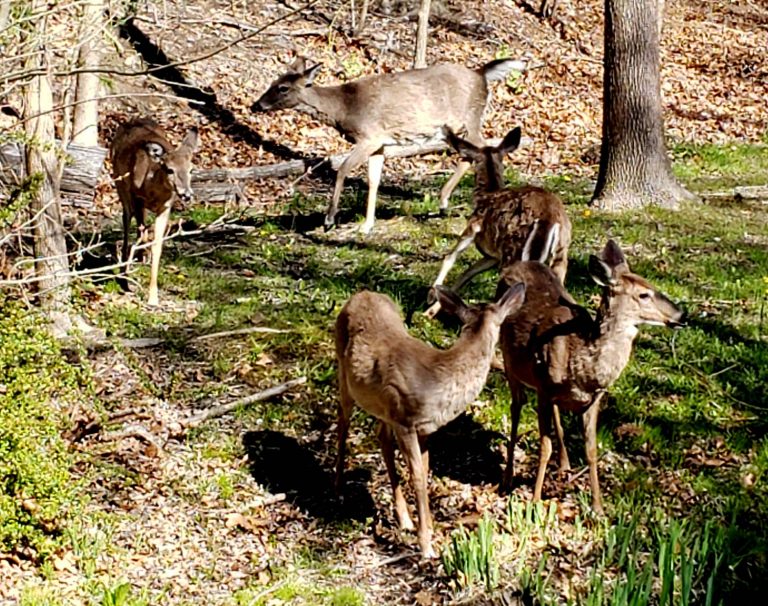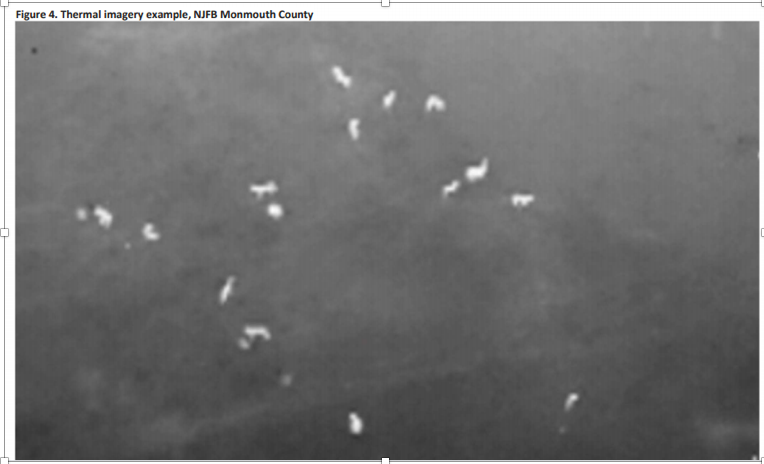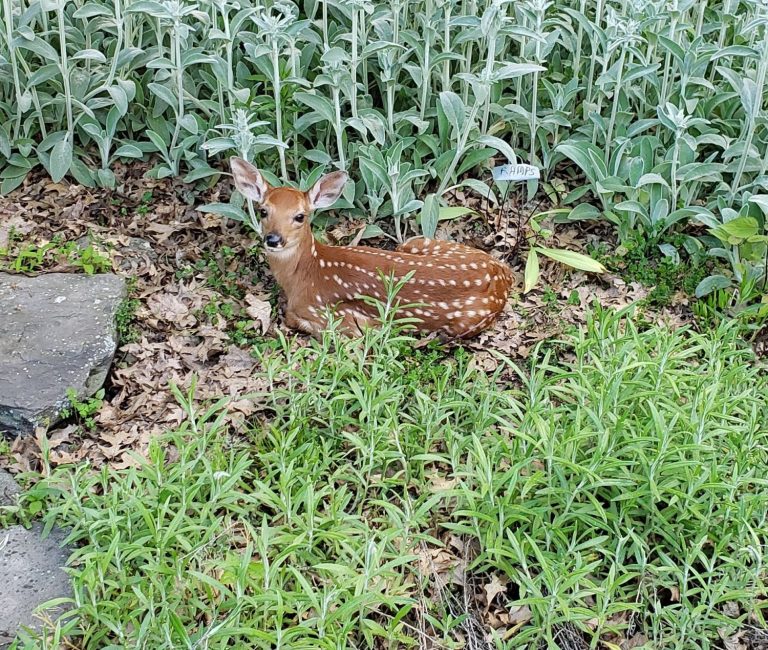This is the first in a series of articles that will examine the problems associated with New Jersey’s overabundant deer population. This article addresses the population numbers and the problems experienced by Laurelwood Arboretum. Future articles will address the economic impact, ecosystem degradation and ramifications for human health.
Believe it or not, during the early 1900s white-tailed deer in New Jersey came close to extinction due to overhunting. This is difficult to imagine now that deer—estimated at 125,000 individuals—are more numerous than full-time teachers (116,000) or nurses (110,000) in our state. The success of conservation programs, including limitations on hunting, allowed their numbers to return to normal by the 1970s. However, these conservation measures and the fact that wolves and cougars—the natural predators of deer—no longer exist in New Jersey have allowed the state’s deer population to reach explosive levels.
Biologists state that sustainable levels of deer should be 5 to 15 individuals per square mile. New Jersey averages 112 per square mile, with some areas as high as 270. When using averages, it should be noted that urban areas such as Hudson County will have few to no deer while suburban and rural areas will have much higher densities. A 2019 survey by the New Jersey Farm Bureau using drones with heat sensing instruments to photograph deer at night found Passaic County’s population to be 44 to 55 deer per square mile, or at least three times the sustainable level.
So what difference does having an unsustainable population make? Well, imagine that you plan an event and invite 112 guests (the state’s deer average per square mile). You order tables, chairs, balloons, decorations, china, silverware, etc, but only enough food to feed 15 of them (the maximum sustainable amount per square mile). In addition to making you the world’s worst host ever, consider this action over decades. This helps explain the degradation of our ecosystems where native plants and tree seedlings in forests are devoured by deer herds, creating areas where only foreign, invasive plants that offer few benefits to insects and birds can grow.
Deer are beautiful, charismatic animals and an important component of a diverse ecosystem when they exist at sustainable levels. Watching them as they quickly and gracefully run through fields and leap over obstacles is enthralling. Witnessing a newborn fawn in one’s garden, as I have experienced, melts your heart. The problem is that since the 1970s deer populations have increased insidiously. This causes danger to the state’s economy, ecology and the health of its citizens, to the extent that the New Jersey Farm Bureau calls deer overabundance a state emergency. This situation also adversely impacts the deer themselves.
People assume the cause of the problem is that humans have taken away land from herds forcing them onto smaller parcels, but this is incorrect. What has been removed are the wolves, cougars and hunting that would have kept populations in check. As in all things in life, too much of a good thing–including sunlight and food—can result in harm. The overabundant deer population will eventually result in the decline of deer as they eliminate their own food sources. Unfortunately, before reaching this point, they will have caused the decline or extinction of many species of plants, insects and birds. When deer are allowed to multiply in an uncontrolled way, entire ecosystems are thrown out of balance.
So what has been the impact of the overabundance of deer on Laurelwood Arboretum? As a commercial nursery decades ago, many rhododendrons and azaleas were planted and thrived. Those specimens became the horticultural heritage of the arboretum, and have contributed enormously to its beauty and serenity as a place of respite for our visitors. Even as the deer population grew, these plants were left alone because there were other plants that were more palatable to the deer’s taste. It didn’t take long, however, for the deer’s favorite plants to be depleted and for the deer to move on to other plants out of necessity. Azaleas have been hardest hit, but rhododendrons have also been on the menu, and thus our status as a nationally renowned garden for these beautiful plants is threatened.
We have replaced many plantings that have been ravaged by the deer. Not only is this costly, our frustration only grows when we see the replacements themselves become deer food. Moving to other types of plants is not always the answer. Just this past season, the deer attacked our beauty berry and arborvitae for the first time. We are sure it won’t be the last. You can just imagine the morale of our volunteers who spend so much time and effort on planning and planting the gardens only to see their vision being chewed down to the ground.
In an effort to protect our treasured heritage, we have been spraying deer repellent for many years. Repellent offers limited protection; it washes away in the rain and must be reapplied, and as deer become accustomed to the smell the repellent loses its efficacy and we must change the repellent that we use from time to time.
In the last few years, we have been netting the more vulnerable plantings in the arboretum. Netting is more permanent than deer repellent, but it has to be repaired again and again due to the ravages of the weather and of the deer themselves. When the netting is breached, the plants that have been off limits are eaten to the ground. Netting is also an eyesore, detracting from our beautiful landscape and preventing visitors from experiencing our plants close up.
These protective measures are expensive. The materials cost several thousands of dollars each year, but even more of a burden are the untold hours it takes our staff and volunteers to spray repellent, and to install and maintain the nets.
The overpopulation of deer in our area has had obvious, deleterious effects on Laurelwood Arboretum, but it is also a statewide emergency that adversely affects the economy, our ecosystems and our health.
Look for next month’s article which will focus on the economic impact of deer overabundance.



